9 reasons to visit Jeddah
Why you should take a trip to Saudi’s second city
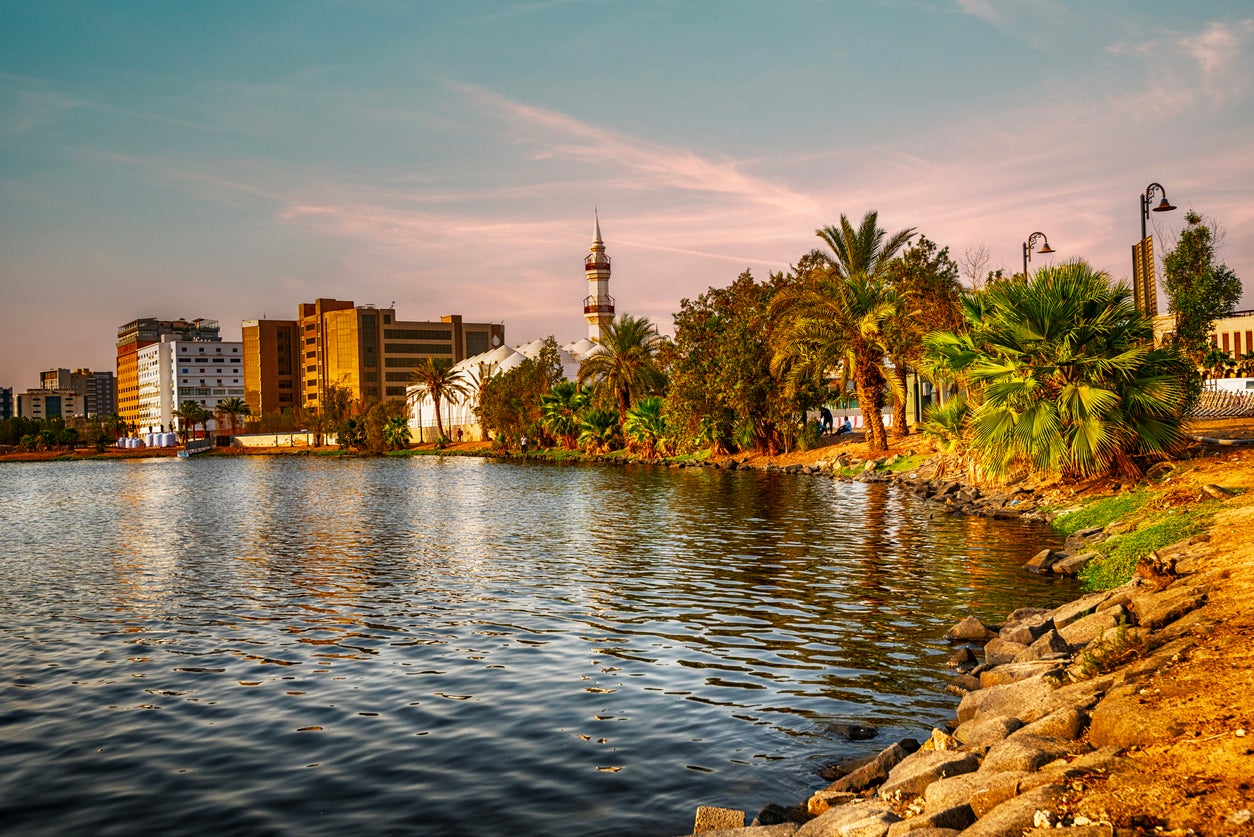
Perhaps most famous as the gateway to Islam’s holiest site, Jeddah is visited by millions every year for Pilgrimage.
But while Saudi Arabia’s second city has been visited by pilgrims from Asia, Africa, Europe and the rest of the Middle East since the 7th century, it has only recently begun to welcome non-religious visitors, with the country’s government issuing its first tourism visas in 2019.
And Jeddah is in prime position to benefit from the drive to increase tourism. Centred around a remarkable and characterful Old Town district, it stretches for miles along the Red Sea, providing a plethora of pristine beaches and a modern waterfront promenade area.
Its streets house a number of traditional markets, city-focused museums and contemporary art galleries, while sports fans can enjoy football matches in between adrenaline-fuelled activities ranging from jet skiing to dune buggy rides. Here’s our pick of the most compelling reasons to visit Jeddah.
Great weather all year
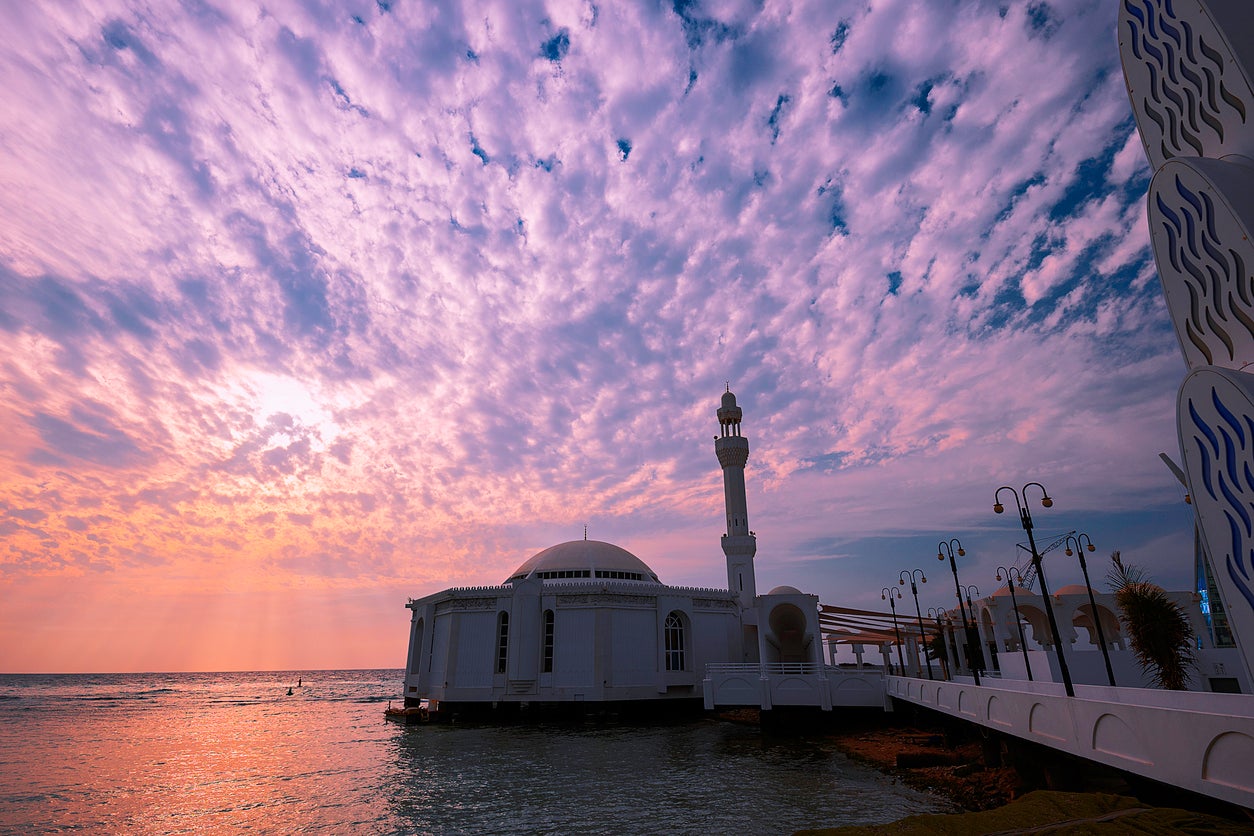
Jeddah has a warm, arid climate with an average of just 61mm of rain per year spread out over a handful of days. Even in winter, average highs range between 29C and 33C, with lows of 19C in January and February. It’s definitely best to visit between October and April if possible, as summer temperatures may become sweltering; average temperatures in July and August lie at 33C, with highs hitting around 38C.
A remarkable Old Town
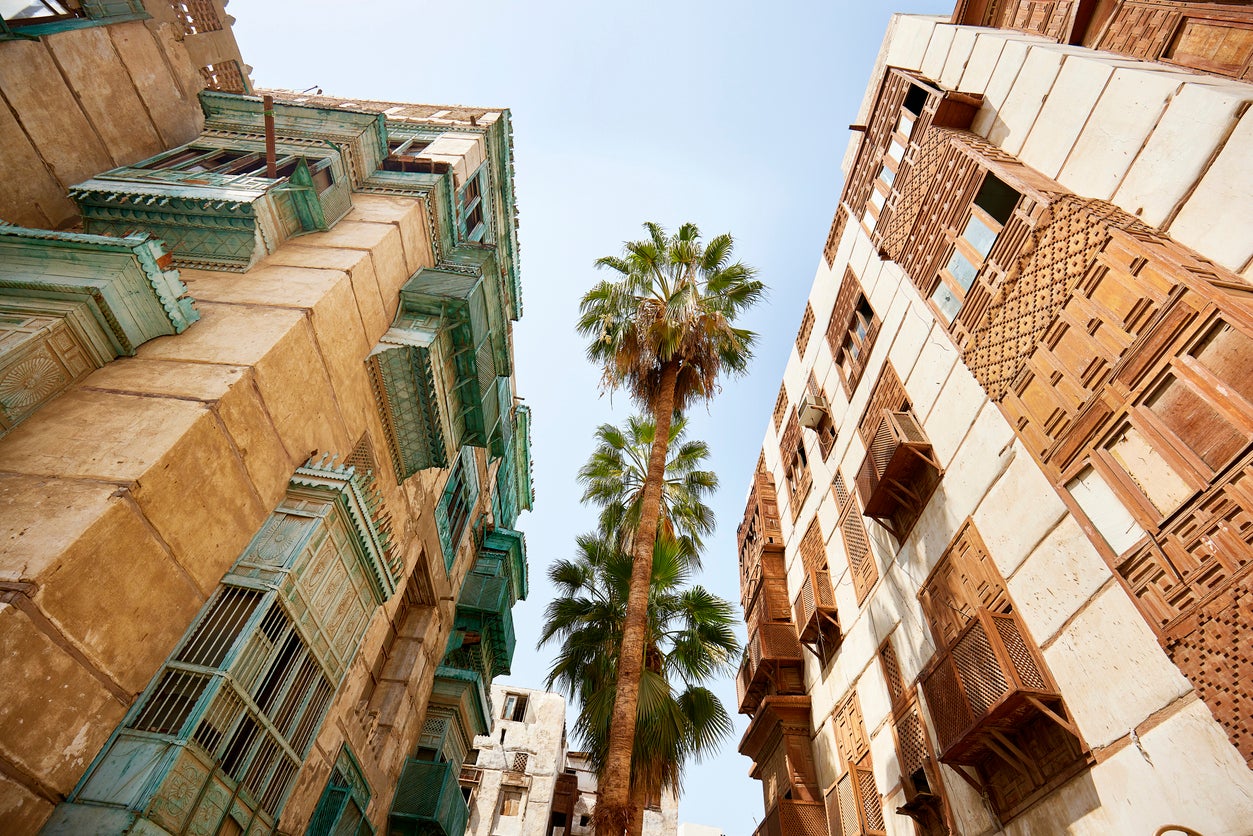
Known locally as Al-Balad, the historic centre of Jeddah is one of just five Unesco-listed sites in the entire country. It has been one of Saudi’s more cosmopolitan areas ever since it was made the gateway to Mecca and has consistently welcomed visitors and settlers from around.the world.
Nowadays, this part of Jeddah is characterised by its Red Sea architecture. Many tall towers still stand – built from limestone and coral – and feature rawashins and mashrabiya, wooden bay structures with carved lattices that served either as decorative balconies or as extra windows to cool the buildings down. Many of these have been restored and now house museums, galleries and modern merchants, while a walk around the tight-knit alleys will take you past various cafes, shops, ancient houses and seven souks, including Al Alawi and Bab Shareef.
The area is also home to the Baab Makkah (Mecca Gate), which serves as the beginning of the pilgrimage route to Mecca – potentially billions of pilgrims have passed under its arches over the last 1,000 years.
Read more on North Africa and Middle East travel:
An impressive promenade and waterfront
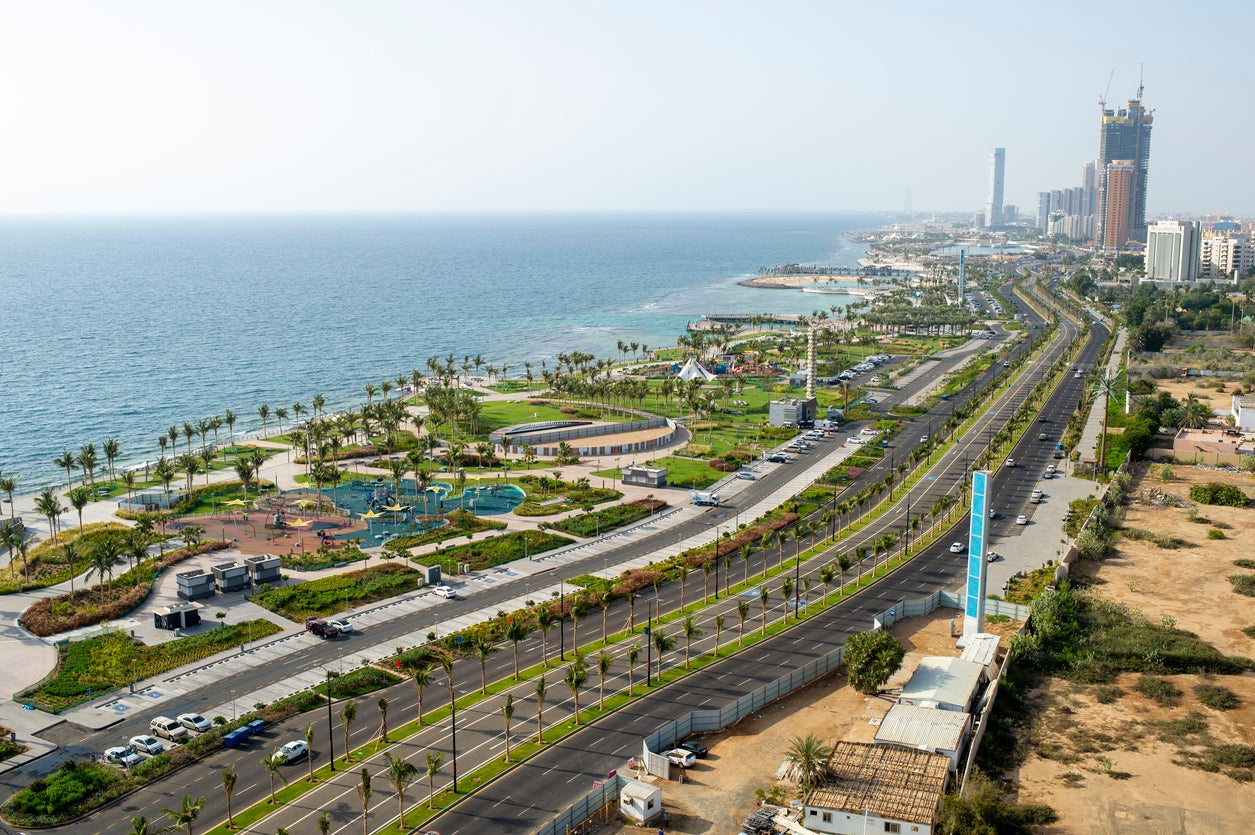
A far more recent addition to the city is its 18-mile Corniche, a mix of promenade and coastal road that contains walking and cycling paths and two of the city’s most famous structures, the floating Al Rahma Mosque and King Fahd’s Fountain, the tallest in the world; with jets reaching 260 metres high, it’s a great place to watch an evening light show.
The ultra-modern Jeddah Waterfront runs for just under a mile in the north of the Corniche, and features a long beach where visitors can rent jet skis, boats and fishing equipment. The large LED-light ‘Jeddah’ sign is a popular place for pictures, while many will want to see the wonderful Art Promendade, an open-air gallery showcasing modern-art sculptures that are dotted between cafes and shops.
Sandy coastline and diving spots
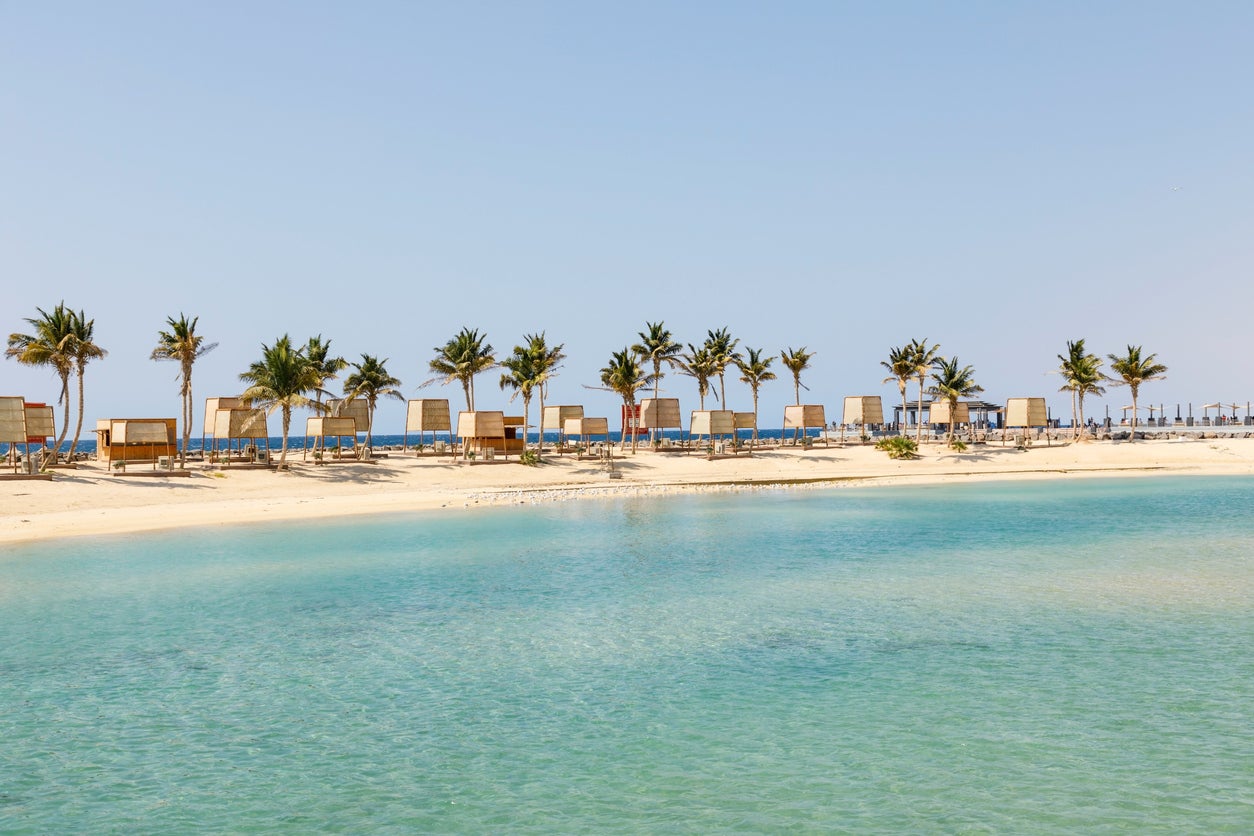
Many of the city’s beaches are free to enter, while prices at fee-paying areas reach as high as 150 riyals (roughly £30).
The aforementioned Jeddah Corniche Beach is the best central choice, while to the south Al Saif is popular with families due to calm waters and a more peaceful crowd (think cafes and picnics rather than jet skis). The majority of beaches sit just north of the city centre, including Alexandria, one of the best for water sports, and Obhur, known for its diving opportunities. If you explore its coral reefs, you can expect to be swimming with turtles, rare species of fish and even bull sharks.
Slightly north of Obhur is the delightful beach-village area of Durrat Al-Arus. It’s home to long stretches of golden sands as well as a golf course, theme park and over 1,000 beach villas.
A series of souqs
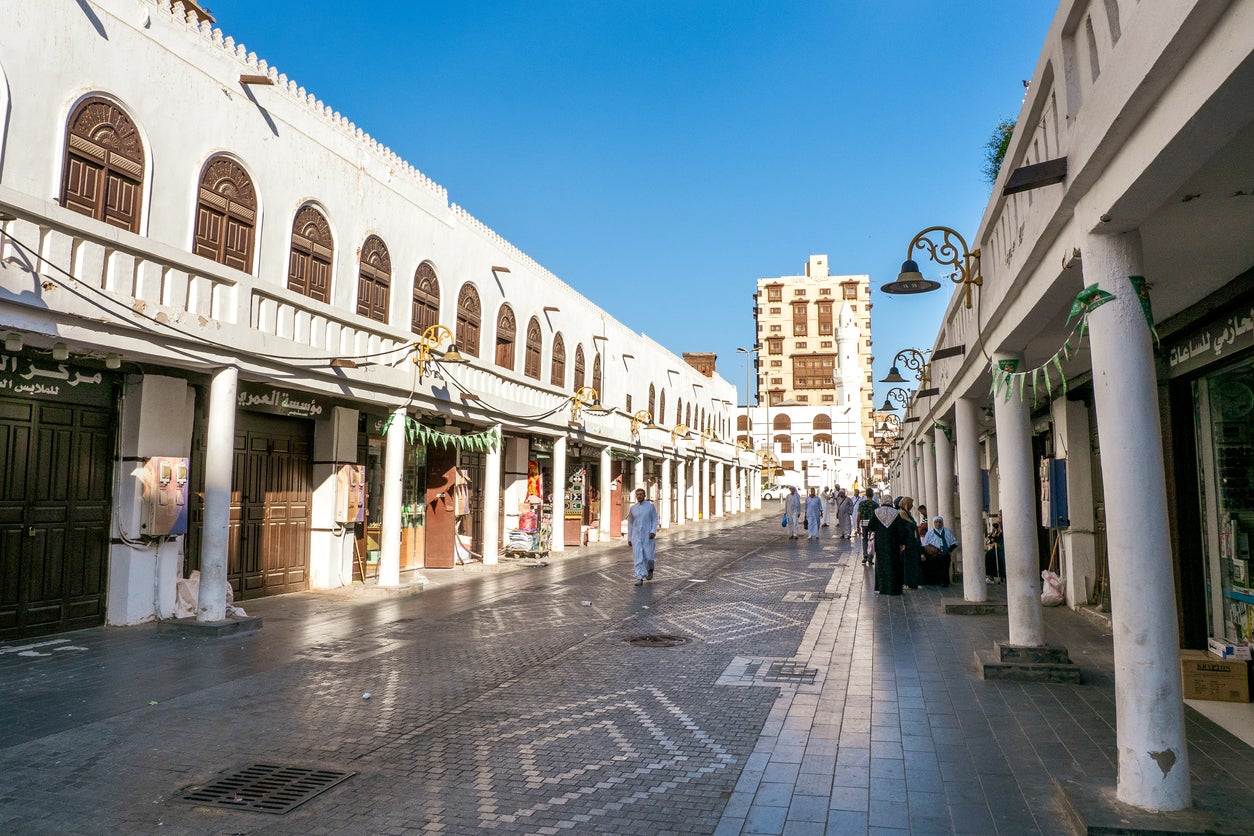
With seven souqs in the Al Balad area alone, Jeddah is a top destination for anyone who loves these traditional Arab markets. The historic Baab Makkah is the location of one of the oldest, where stalls and carts are set up at sunset ahead of evening shoppers arriving, while the nearby Al-Badu has sold textiles, foodstuffs, silver and gold for over 140 years.
Bab Shareef and Qabil are both popular too – particularly during Ramadan or with pilgrims looking for souvenirs – with the market street setting at Qabil a particularly picturesque souq. Al Alawi, one of the largest in the country, dominates the heart of the Old Town, selling everything from Arabian jewellery and art to a variety of spices and foods.
Alshat’a, located north of Al-Balad, is known for selling a wider range of goods including makeup, perfume, homeware and traditional abayas, while just 10 minutes east the Bawadi market specialises in handicrafts and gold jewellery. In the northern part of the Corniche, Al-Murjan, formerly known as the ‘Syrian Market’, sells both local and imported products.
The city’s Season
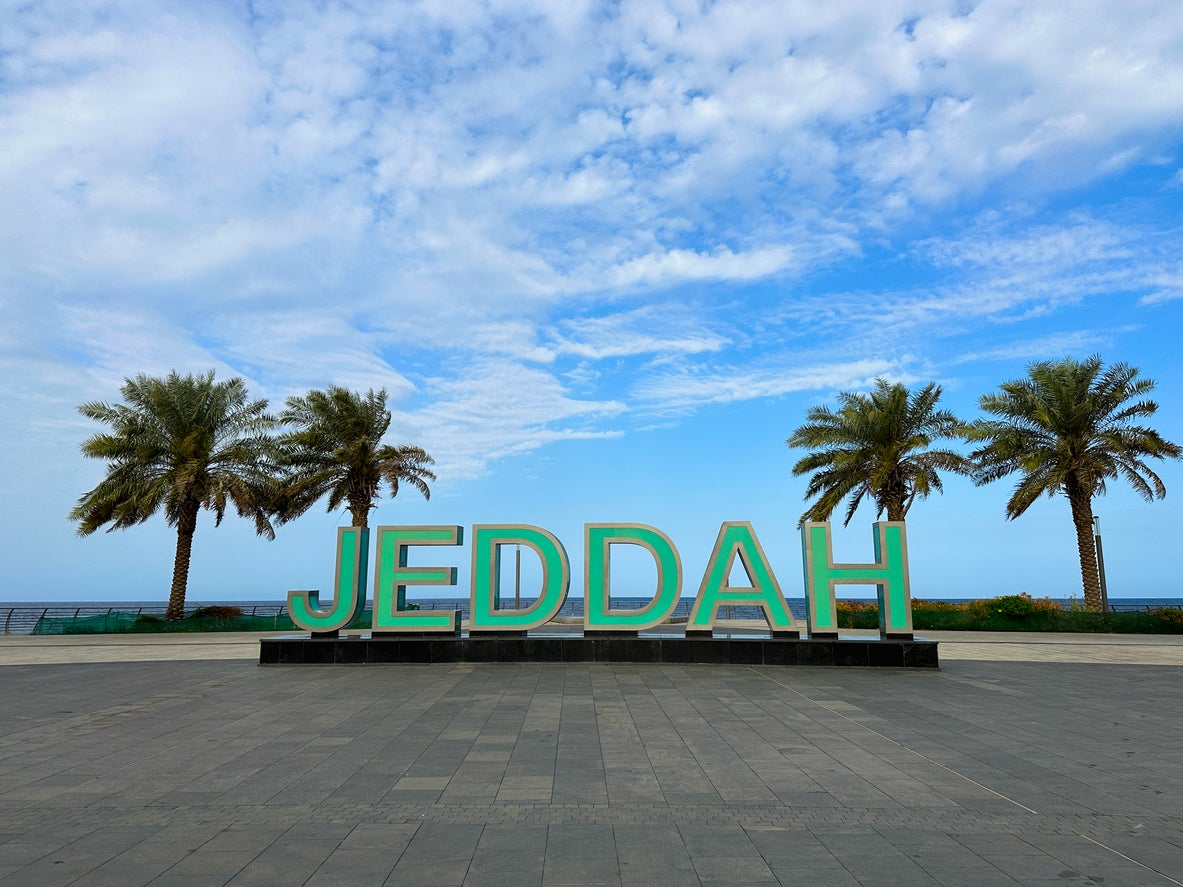
Annual ‘Seasons’ celebrations began in several cities in 2019, providing several-month periods of events celebrating Arabian arts and culture. Jeddah’s season is particularly popular – it reported six million visitors last year – and takes place over May and June, with thousands of events from musical acts and nightly theatre shows to specially set-up zones offering parks, zoos and opportunities to try out different sports.
Dates for the next Seasons haven’t been confirmed yet, but those who do visit during this period will find an even more vibrant, cosmopolitan atmosphere in the city as they wander through various zones, whether trying their hand at archery or visiting the purpose-built theme park at Jeddah Pier.
Expansive desert
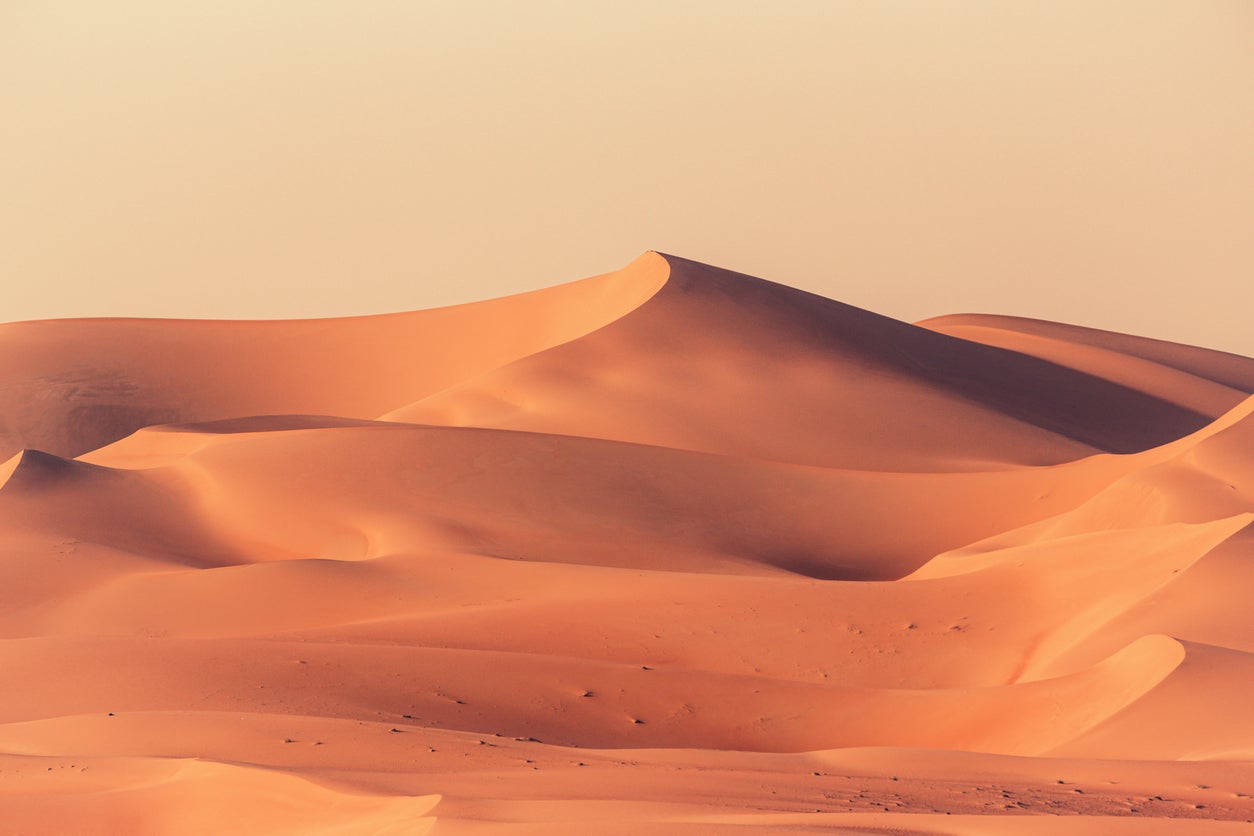
The desert that begins on the outskirts of Jeddah is a great place for a different type of adventure. Adrenaline-junkies might want to go sand boarding or try dune buggy rides and 4X4 safaris, while the more relaxed visitor may prefer walking tours and camel rides. For something even more enchanting, spend a night camping among the dunes, where you’ll stay in Bedouin-style campsites and sample traditional cuisine as you gaze at often clear desert skies.
The range of galleries and museums
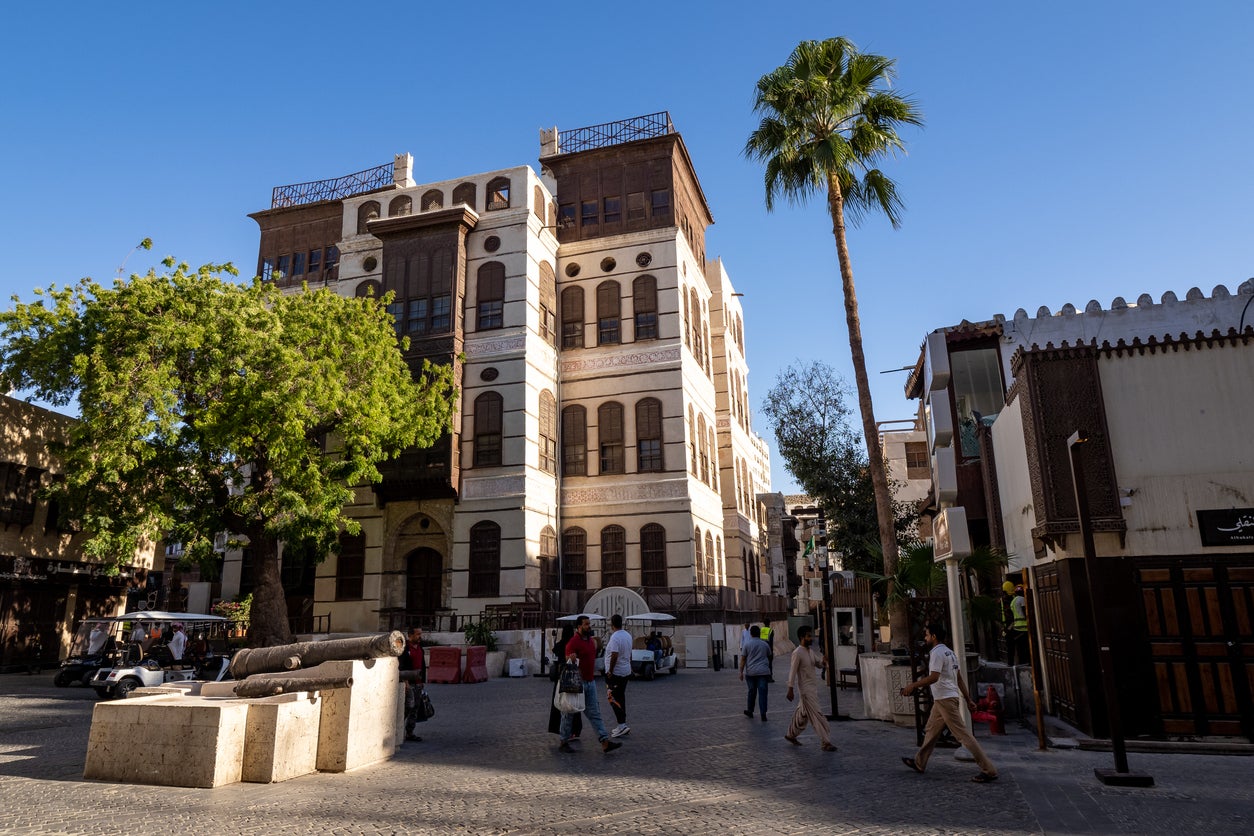
Jeddah celebrates Saudi and Islamic art and history via a wealth of galleries and museums throughout the city. The ATHR and Nezma galleries are at the forefront of the contemporary art scene, with both exhibiting works from local artists and others from the wider Arabian world.
Though the Saudi Centre for Fine Arts has plenty of exhibitions on modern art from famous Saudi artists, the focus is on offering courses in a range of artistic methods, from photography and pottery to oil painting and water colours. For a mix of modern and older art, visit the Hafez Gallery or the Darat Safeya Binzagr gallery; the latter has both art and artefacts from years gone by, as well as displaying the personal collection of the owner, Safeya Binzagr.
History lovers will want to start at the Al Tayebat Museum to explore four floors of Saudi and Islamic artefacts including weaponry, manuscripts and pottery. The Museum at Khuzam Palace houses many personal items of King Abdul Aziz and even some belonging to the first Muslim Caliph, Abou Bakr Al-Siddi. The Nassif House, meanwhile, is known as much for its intricate facade as it is for its collection of items related to bygone eras in Jeddah. The Our Days of Bliss Magad Museum and the Municipality Museum chronicle the history of the city in particular, using a range of photos, artefacts and paintings.
It’s a burgeoning sports destination
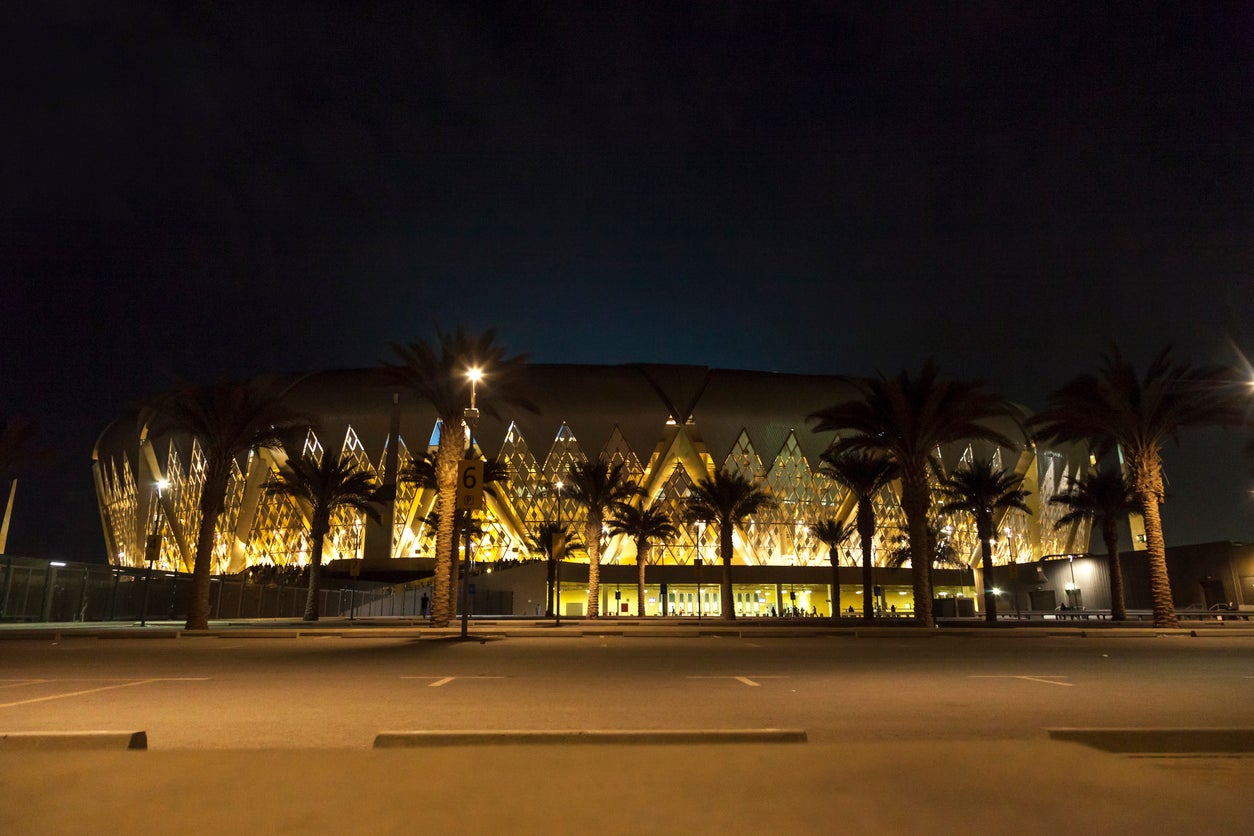
With Saudi Arabia having hosted its first Formula One Grand Prix in 2021 and now attempting to make inroads into the world of football, the country is as much of a sporting destination as any other in the Gulf. While the Grand Prix takes place just once a year at the Jeddah Corniche Circuit, the city’s football teams, Al-Ittihad and Al Ahli, play most weekends between August and May. With increasing investment made to sign top level players, watching a match anywhere in Saudi Arabia will increasingly be on visitors’ radars.
Read our reviews of the best winter sun hotels
Join our commenting forum
Join thought-provoking conversations, follow other Independent readers and see their replies
Comments
Bookmark popover
Removed from bookmarks